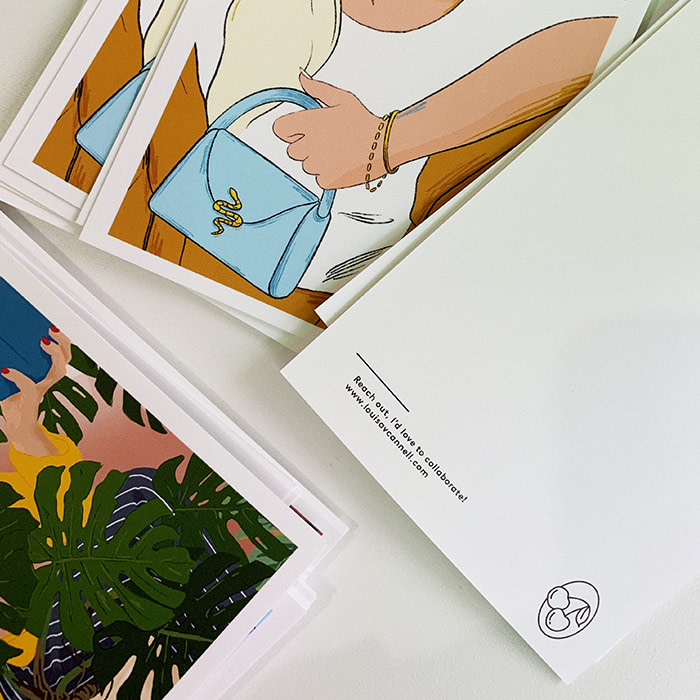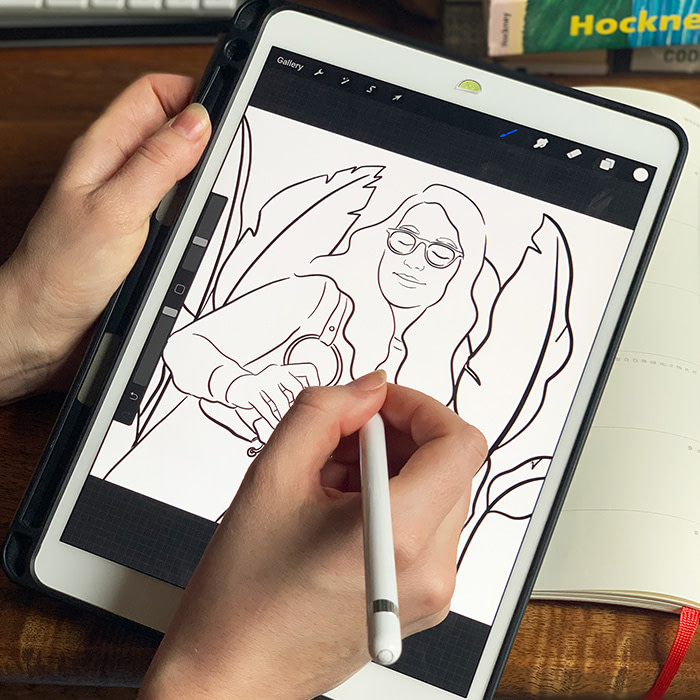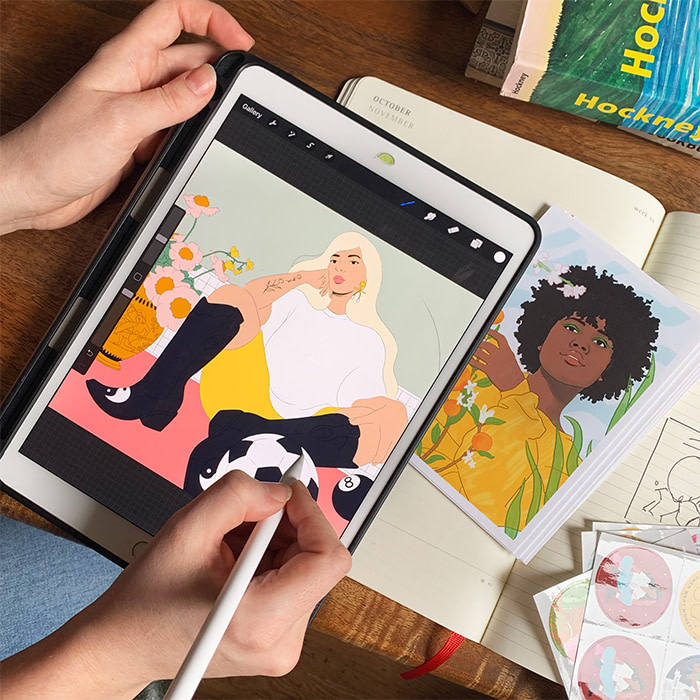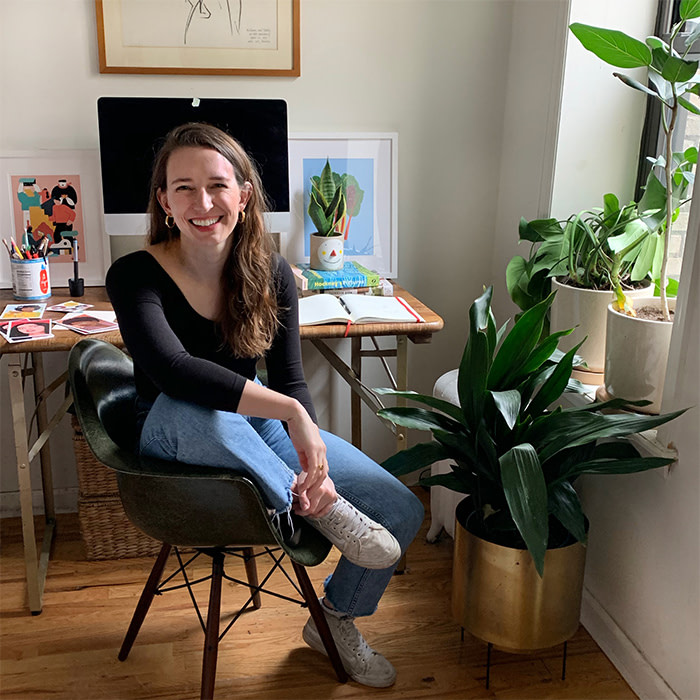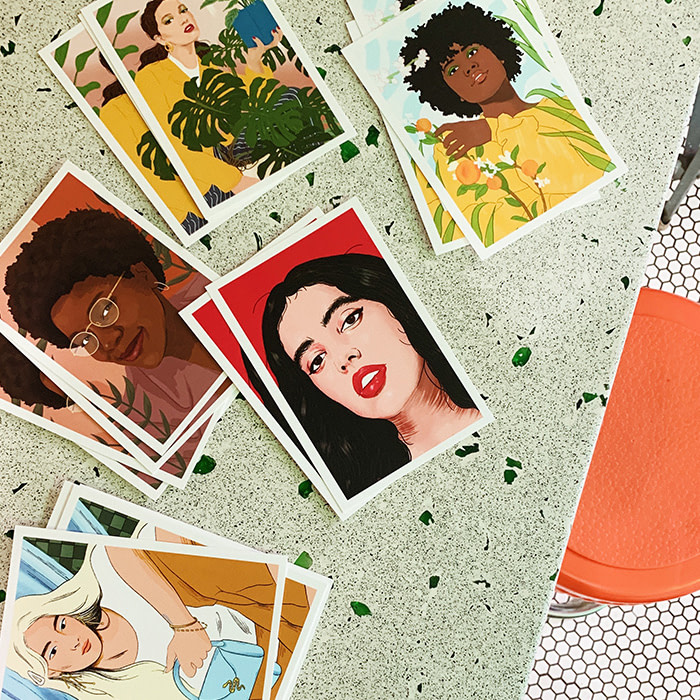Louisa Cannell’s illustrations are a celebration of strong women
In just two years, Louisa Cannell has made her mark on the design landscape. MOO speaks to her about the power of illustration.
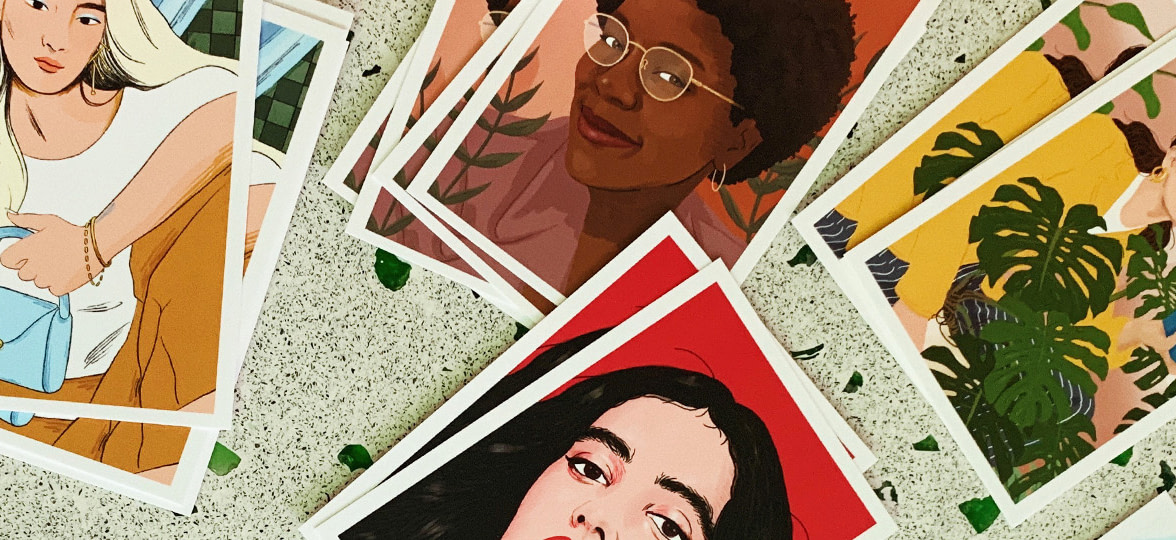
In just two years, Louisa Cannell has made her mark on the design landscape. MOO speaks to her about the power of illustration.
Brooklyn, NY-based designer Louisa Cannell’s bold and colorful illustrations offer social and political commentary, often featuring strong women holding the viewer firmly in their gaze.
The artist’s vibrant style is under constant evolution, from detailed portraiture, to still lifes featuring block colors and simple, fluid lines.
Although she has only been illustrating full-time for two years, Louisa’s clients include Condé Nast Traveler, National Geographic, Google and Samsung. Today, she’s a staff designer at Refinery29.
“My style is still evolving, so I love to try new things and work out the kinks in previous illustrations,” she says.
MOO spoke with Louisa to discuss her artistic development, how new designers can get their work noticed, and the power of illustration as a force for change.
Tell us about yourself and your background. How did you start out in design?
I grew up in Washington, DC. I had a hard time learning to read when I was a kid, so my parents gave me comic books as a way of making practicing more fun. In the end, I had something like 200 Betty & Veronica comic books, and that got me interested in visual storytelling.
My career path has been a bit of a rollercoaster. I majored in Art History and Visual Arts, and had this bizarre vision of moving to New York and suddenly becoming Andy from The Devil Wears Prada.
Instead, I got an unpaid internship in a prop shop’s graphics department, making things like fake food packaging and concert tickets while applying for paid roles.
A series of roles followed, including in the art department at Brides Magazine and in marketing at VICE’s TV channel, VICELAND. Each job introduced me to amazing people, and were unique in their own ways. Then each evening, I’d come home and teach myself how to illustrate.
Eventually, I decided to try being an illustrator for real. I got a freelance job at Refinery29, which turned into a full-time role – and two years later, I’m still here.
When did you start using your art to promote social issues?
When I started at Refinery29, one of the first projects I worked on was an illustration for the Women’s March. It was my first time approaching a project with such complex emotions, and where my own feelings were so invested.
I wanted the illustration I did – called Hope Not Fear – to represent those emotions, and to put forth the bravery that’s grounded in so many women. It was amazing to see the effect my illustration had on other people – I received messages from all over the world telling me how much it meant to them. It was a very powerful moment, and I’ll be forever grateful for those messages.
Illustrations and graphics are so important for uniting people, communicating the severity of social issues and shedding light on those in need.
What’s the biggest tool you’ve used in getting your work noticed?
I’m pretty shameless about reaching out to people, so now, when someone reaches out to me, I try to take the time to give my advice, connect them with someone else I know or recommend them for a role.
So many people helped me get to where I am, responded to my random LinkedIn messages or DMs, or met me for a coffee. I want to make sure I pay the favor back to others.
When you receive a brief, what are the stages you move through from concept to finished piece?
I show new clients moodboards of my different illustration styles and ask if there’s one they prefer. From there, I brainstorm a few poses and take reference photos (my phone is full of awkward photos of myself posing in different ways).
I also have a Pinterest board of color references that I build upon for inspiration – if I see color combos I love when I’m out and about, I try to snap a photo so I can add it to my swatches.
Next, I do a line sketch and send it to the client for approval. Once that’s done, I work on the final piece – for the most part, there are usually only minor tweaks after that.
How do you juggle multiple briefs from different clients?
That’s one of the most challenging things – it’s so important to get enough headspace to think creatively. I try to only accept what I can handle, and carve out non-screen time to get my creative energy flowing: working out, cooking, or going for a walk.
I don’t have much time for personal work, but when I do, I like to draw women lounging. It’s so relaxing to draw with no reason in mind.
What’s your advice to aspiring illustrators hoping get their work noticed?
Reach out to illustrators you like on Instagram, and make friends rather than seeing them as competitors. Make Instagram your portfolio, and make sure your website is up to date.
Write thank-you messages when someone helps you out. Be patient, be nice and give yourself the type of projects you want your clients to see.
Do you think it’s important to have a well-designed print to promote yourself properly?
So important! If you design it well, your Postcard or Business Card could end up on someone’s mood board, or passed to another potential client. It’s a simple way to show you’re professional, confident, and excited about your work. You’re worth it!
Looking for more inspiration? Check out our interview with artist and designer Rocio Egio.
Keep in touch
Get design inspiration, business tips and special offers straight to your inbox with our MOOsletter, out every two weeks.


